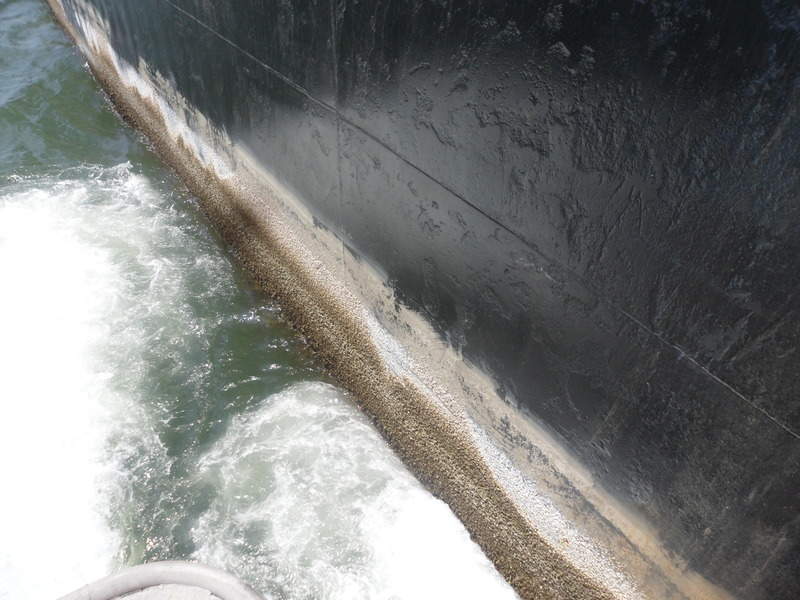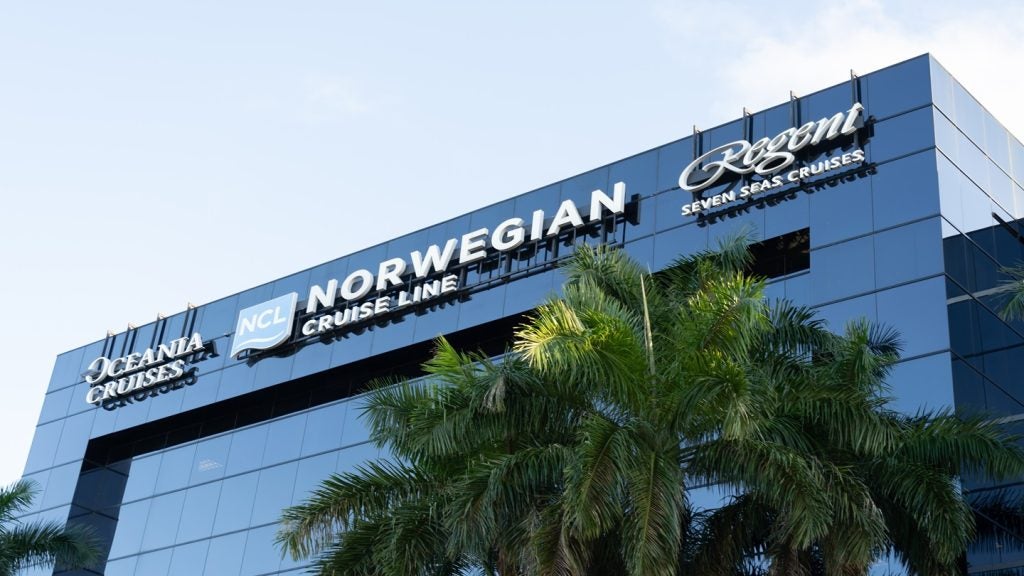
The International Maritime Organization has proposed its new GloFouling Partnerships project in a bid to reduce the spread of aquatic species through biofouling. The project will also help developing countries to deal with the issue by promoting new policy reforms and awareness campaigns. Joe Baker finds out more.
For many underwater creatures, the hull of a ship is the perfect spot to bed down for the long haul. As vessels pass through the water, bacteria attach to their undersides to form nutrient-rich biofilms. These adhesive surfaces attract all sorts of aquatic beasties, from tiny algae spores to larger organisms such as barnacles, tube worms and molluscs.
Ships worldwide suffer from the negative effects of this accumulation – known as biofouling – which can cause structural damage to hulls, interfere with propulsion systems and increase drag.
“Biofouling has always been recognised as a problem for ships, as it can lead to extra energy consumption due to increases in ship resistance and consequently higher fuel cost, high maintenance costs and increased corrosion,” says Dr Stefan Micallef, director of the International Maritime Organization’s (IMO) marine environment division.
Invasive species: cause for concern
Nevertheless, in recent years environmental scientists have become more concerned about the link between biofouling and the transfer of invasive aquatic species (IAS). Organisms that settle on vessels are carried across the ocean to new waters. If they survive, they may establish a reproductive population in their new environment, competing with other native species and potentially multiplying to reach pest proportions.
Micallef gives the example of the Northern Pacific seastar, a carnivorous starfish native to the Northwest Pacific that has been introduced to the Northeast Pacific and Southern Australia. The fast-breeding organism has proven a pest to native species, including the endangered spotted handfish, as the seastar preys on their eggs.
How well do you really know your competitors?
Access the most comprehensive Company Profiles on the market, powered by GlobalData. Save hours of research. Gain competitive edge.

Thank you!
Your download email will arrive shortly
Not ready to buy yet? Download a free sample
We are confident about the unique quality of our Company Profiles. However, we want you to make the most beneficial decision for your business, so we offer a free sample that you can download by submitting the below form
By GlobalData“These species are causing enormous damage to biodiversity and the valuable natural riches of the earth upon which humankind depends, and the damage to the environment is often irreversible,” says Micallef. “Moreover, there may be direct and indirect impacts on human health. Marine bio-invasions are therefore the source of significant environmental impacts.”
Over the past few years, the impact of IAS has led the shipping industry’s regulatory bodies to stand up and take action. Earlier this year, the IMO completed its GloBallast Partnerships Project, which aimed to implement international regulations on ballast water, a major medium for the transportation of IAS.
Now, the GloFouling Partnerships Project – a potential collaboration between the IMO, the Global Environment Facility (GEF) and the United Nations Development Programme (UNDP) – has been proposed to help operators combat the build-up of aquatic organisms on ship hulls and structures.
The project is one of several put forward under the three-tiered GEF-UNDP-IMO model, which aims to drive reforms, encourage innovative technology development, and support the production of energy-efficient ships.
Fighting back against biofouling
After receiving endorsement from the GEF, the GloFouling Partnerships Project will help countries and ship operators to implement the IMO’s Biofouling Guidelines for treating ship hulls.
Released in 2011, the guidelines inform ship operators about the correct use of anti-fouling coatings, specialised paints that can be applied to ship hulls to slow down marine growth.
“There are a multitude of anti-fouling coatings available on the market that are designed to perform under different conditions on different ship types,” says Micallef. “Therefore, a careful selection must be made of an anti-fouling system that would be effective for the required period of time based on the ship’s operating profile, including speed, ratio of time underway or stationary, locations of operation, and dry-docking intervals.
The guidelines show how biofouling can be minimised in niche areas of vessels that are more susceptible to biofouling. They also explain cleaning methods and techniques for trailered vessels, which are still capable of transferring aquatic species outside of water.
Yet despite this comprehensive guidance, the IAS problem has only intensified in recent years, with more and more vessels hosting unwanted stowaways on their hulls. The NOAA Fisheries Service estimates that in the US alone, the cost of managing both aquatic and terrestrial species is $137bn per year.
“One challenge relates to the fact the Biofouling Guidelines are voluntary by nature,” says Micallef. “They have been adopted as recommendations, whereas the other Glo-X projects implemented by IMO, namely the Ballast Water Management Convention (GloBallast) and MARPOL Annex VI (GloMEEP), have been addressing mandatory instruments.”
Forming partnerships
The GloFouling Partnership Project has therefore been introduced to help shipowners implement changes suggested by the IMO’s Biofouling Guidelines. Where legislation is concerned, the project aims to assist participating countries with reforming maritime policies so that they incorporate biofouling management strategies, as well as offer enhanced financing for these activities.
A key aspect of the project will be developing the capacity of nations to reduce biofouling. Under the current proposal, national and regional training programmes will be introduced on various aspects of biofouling management.
The IMO is also hoping to raise awareness of the issue through a range of activities, from seminars for policy and decision-makers, to the production of at least two documentaries exploring the effects of biofouling and IAS.
Furthermore, the project partners are hoping to build on existing private sector alliances formed from its completed GloBallast scheme. The hope is that collaboration between partnering companies will spark the development of new innovative technology and cost-effective management solutions.
According to Micallef, the pursuit of new technologies and cleaning methods has already yielded some fruitful results.
“There are interesting developments in new technology, such as specialised treatment for internal piping systems (hot water cleaning systems) or sea chests (UV-based systems),” he says. “New designs for niche areas are also being researched, to make them less susceptible to fouling and more accessible for maintenance.
“Finally, there is the promising development of new in-water cleaning technologies, such as remotely or diver-controlled robots that clean the hulls without damaging the paint. These may also collect the biofouling, which will then need to be disposed of and treated on land.”
Reducing the environmental impact
The successful implementation of the GloFouling Partnerships Project could help relieve the damage caused by IAS to coastal infrastructure, which not only affects tourism, aquaculture and fisheries, but can threaten lives in coastal communities.
It also stands to benefit ship operators plagued by costs and vessel performance issues caused by biofouling. In 2012, the Office of Naval Research reported that marine crustaceans on ship hulls could increase drag by more than 60%, reducing vessel speeds by up to 10%. Ships can require as much as a 40% increase in fuel consumption just to deal with this additional drag, which increases not only costs, but the amount of carbon emissions they spew out.
By helping countries implement new strategies and solutions, the GloFouling Partnerships initiative could double down on mitigating the sector’s environmental impact, as well as saving ship operators money.
“By removing fouling, the ship moves more efficiently through the water with less friction,” says Micallef. “The management of biofouling, in addition to reducing the transfer of potentially harmful invasive species and protecting the marine environment, also provides a substantial benefit with regard to fuel consumption and the reduction of greenhouse gas emissions.”
The green light for GloFouling is still a while off. The IMO is finishing preparations on its list of activities, the recipient countries, the budget and the logistical framework for the project, which will be summarised in a final document.
“This will be submitted to the GEF for final endorsement in mid-2018, with a view to launching the full-size project next year,” says Micallef.
When the project gets off the ground, it could give the push needed to participating countries and industry partners to find new solutions for biofouling, the effects of which could be felt worldwide.







